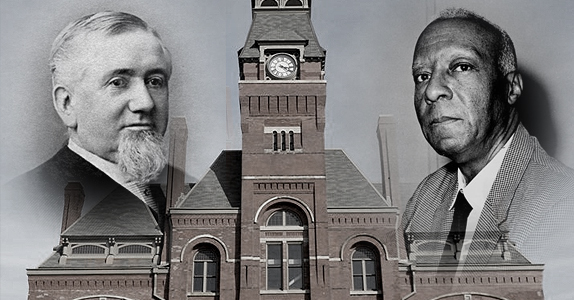
The wait for protection and national recognition for Chicago’s Pullman District is finally over, thanks to President Obama’s action on February 19. By using his authority under the Antiquities Act, as Presidents of both political parties have done before him, the President established Pullman Historic District National Monument.
Through his action, and with bi-partisan support, the President has preserved an important, multi-faceted chapter of our nation’s history in perpetuity.
Not only is the Pullman District an icon for the nation’s rapid industrial growth in the late 1800s, it is also a place where African-American workers put their voices front and center in the movement that sought to give workers better pay and more rights. Through this activism, history was made in both the labor and civil rights movements. The legacy of the Pullman workers resonates across class, across race, and across our country, including right here in New Mexico.
Let us recount the Pullman story.
It is at the Pullman District that 19th Century industrialist George M. Pullman operated the Pullman Palace Railroad Company and built nearby large residences for the company’s executives, as well as an entire neighborhood of quality brick houses with running water—unheard of at the time—for the factory’s blue-collar workers.
But more than just a historic neighborhood, Pullman is important because it would be hard to have a conversation about the growth of workers’ rights and civil rights in America without referencing Pullman.
Pullman employees built state-of-the-art railcars in less-than-favorable conditions, and were often overworked and underpaid. This eventually led to a strike in 1894 by workers who complained that the rent prices for Pullman-owned homes remained the same even though wages were being cut and workers were being laid off due to sagging sales.
It is also impossible to talk about civil rights and the progress made by America’s African-American population without referencing the Pullman Company.
In 1925, Asa Philip Randolph and others formed the Brotherhood of Sleeping Car Porters, the nation’s first African-American-led labor union, to organize the Pullman Porters. Few authentic sites exist which tell the Pullman Porters’ story, but one that does is the A. Philip Randolph Pullman Porter Museum, located in one of the original Pullman row houses within the new National Monument.
This historic museum is significant to people all across our nation. Thanks to President Obama, their place in history will be preserved so that our children and grandchildren can learn about how far we’ve come as a country and that we always have more to do until all people and workers are treated equally and with dignity and respect.
It is fortunate for New Mexico and all Americans that the President and his team have fought to ensure that our parks and national public lands tell the story of all Americans. Interior Secretary Sally Jewell has enthusiastically championed diversity in our parks and public lands by helping support the recent Organ Mountains-Desert Peaks National Monument near Las Cruces and has helped to lead the charge on Pullman.
The new Pullman National Monument is important not just for Chicago, but for those who value equal rights and fair treatment for all people, and who long to see our nation recognize the contributions of all Americans.



Responses to “New Pullman Monument Helps Tell Our Nation’s Civil Rights Story”